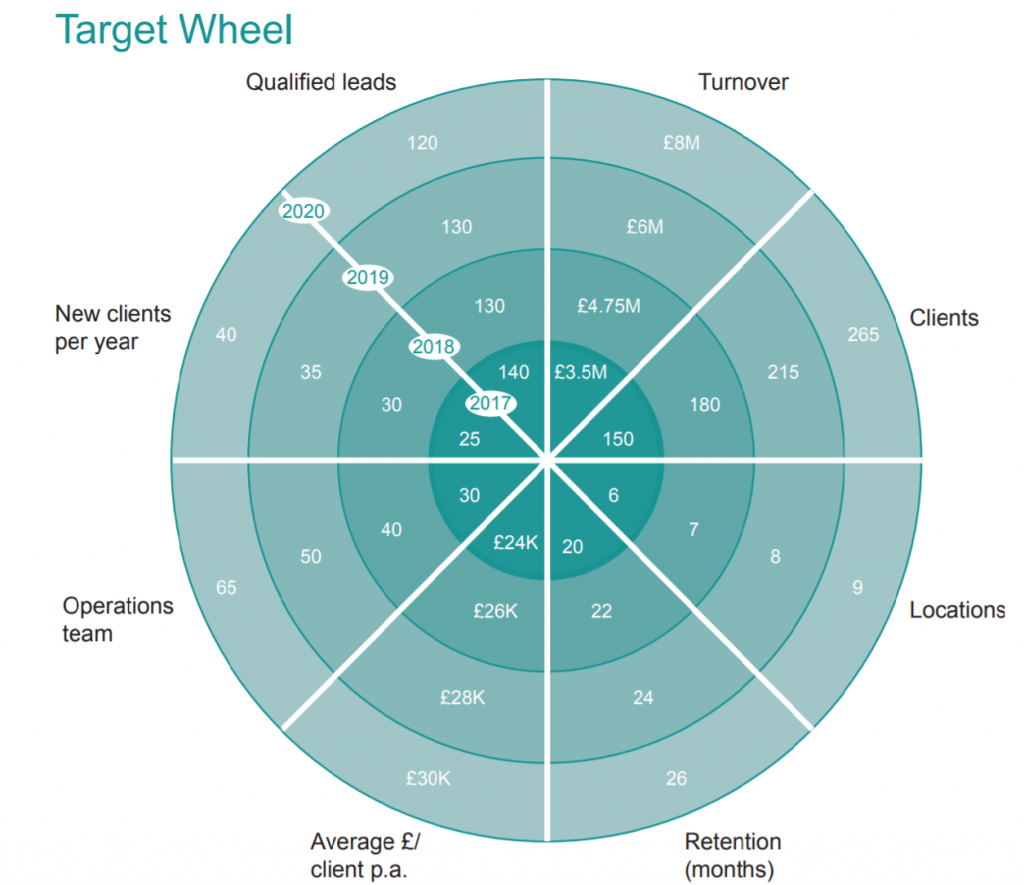Using a balanced scorecard and setting goals for HR strategy
How do you set goals for individual employees that directly feed back into your HR strategy and your organisation’s strategic vision? Shaun O’Hara, HR Director at People Puzzles, explains how a balanced scorecard works to achieve just that.
Is everyone in your business aligned with your vision of where the business is going and what it wants to achieve? If so, how do you know? Do you measure it? Do you know when you’re not achieving it?
The Balanced Scorecard
Many businesses are now using a ‘balanced scorecard’ – a strategy performance management tool* used to help them set goals and measure performance, at company, department/function and individual level. While it is used by many large companies such as Tesco, all the small and mid-tier clients I currently work with are implementing it too.
A balanced scorecard tracks all the things you want to measure and improve in order to achieve your strategic goals. It typically involves setting goals in terms of customer, people, financial, operations and more recently also environment, community or corporate social responsibility priorities. In short, it’s a set of performance indicators that correlate directly back to the business strategy.

When we work with businesses, one of the first things we do is to conduct an employee survey to find out how clear the vision of the business is. If there’s gap at the top level – and there very often is – with no unified vision or aligned strategy, we work with the management team to identify the purpose, vision and values of the business. This often takes a number of workshops with the executive team followed by engagement events with employees.
Within these workshops a key step is establishing a set of strategic goals, and that’s where the balanced scorecard comes in. Once the executive team has established a strategy, including three- to five-year strategic goals, these are then converted into a set of annual metrics. Take, for example, people engagement. How would you measure it and how much do you want it to increase?
Using Framework to get everyone inspired and aligned
The next step is to take that balanced scorecard out to the business. The company scorecard can be used to get everyone inspired and aligned with it. But the real trick is to set separate scorecards, using the same framework, for each section, function or branch of your business.
The ultimate aim is to go a stage beyond that – getting leaders to create a balanced scorecard per individual through the performance management process. That is when you have really nailed it.
When I worked at Tesco, we used a steering wheel the size of a wall in every single store. A traffic light system was used so when there was a red or amber situation, people could be mobilised to work on converting it back to green. Employees were able to see how their work contributed to the bigger picture.
The template can be used to set individual goals using each section of the business’s overall balanced scorecard. So even hourly paid shop floor staff can have measured objectives around customer service, they can help reduce waste on their section, therefore contributing to the overall financial goals, and so on.
Increase employee engagement
If used well, a balanced scorecard can not only transform the way you work towards your strategic goals, it can also be used to increase employee engagement. One of the biggest drivers of having engaged staff is them feeling that they are involved in the future of the organisation and understanding the direction of travel.
Once you have everyone pulling towards the same goal and recognising their part, there really is very little that can stand in your way in achieving it.
Shaun O’Hara, HR Director
If you’d like to talk to us about developing a balanced scorecard for your business, please drop us an email to talk to one of our experienced HR Directors – or give us a call on 0808 164 5826.
Footnote:
*For a detailed explanation of what a Balanced Scorecard is, see the Chartered Institute of Management Accountants (CIMA) report, A Practitioner’s Guide to the Balanced Scorecard.



